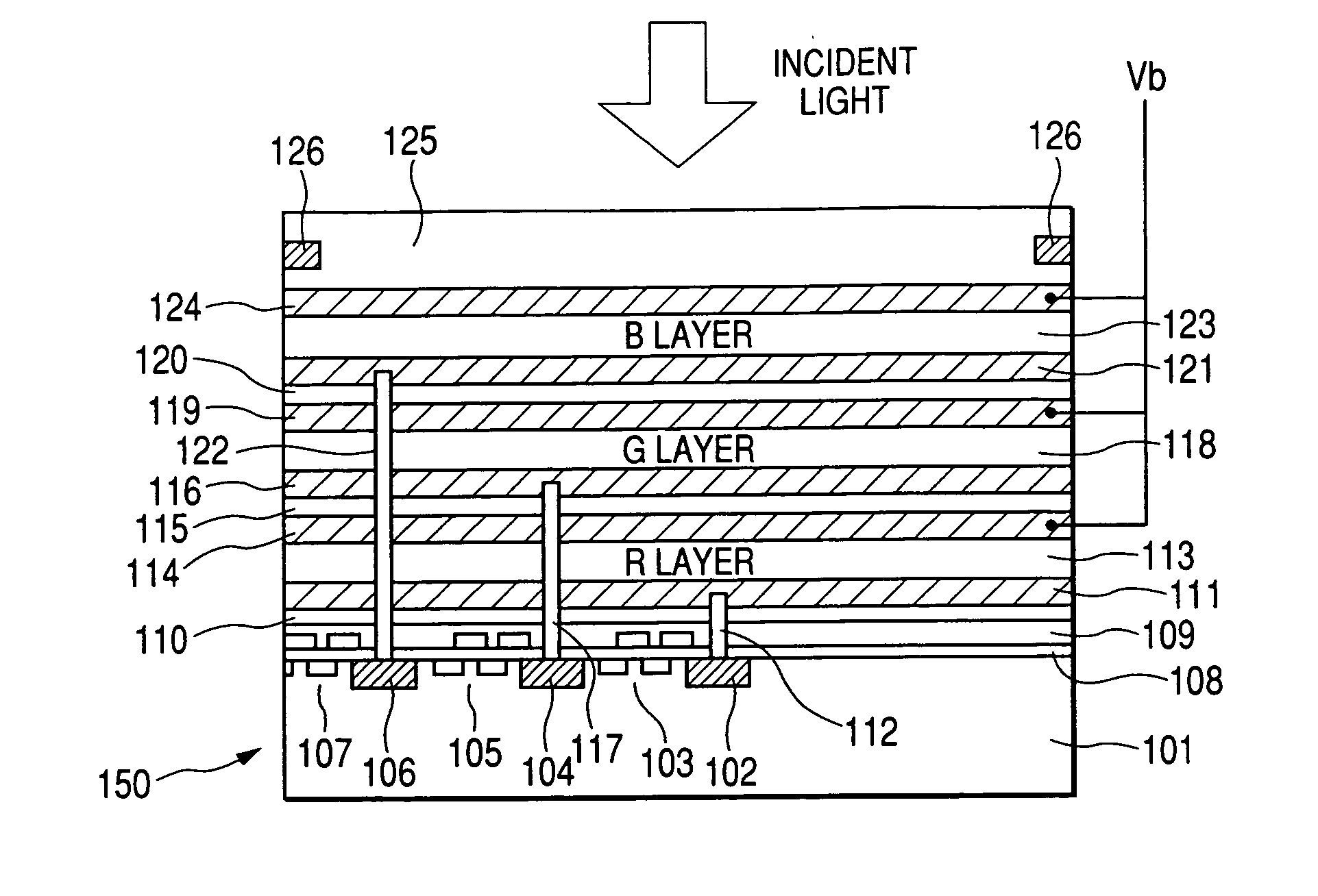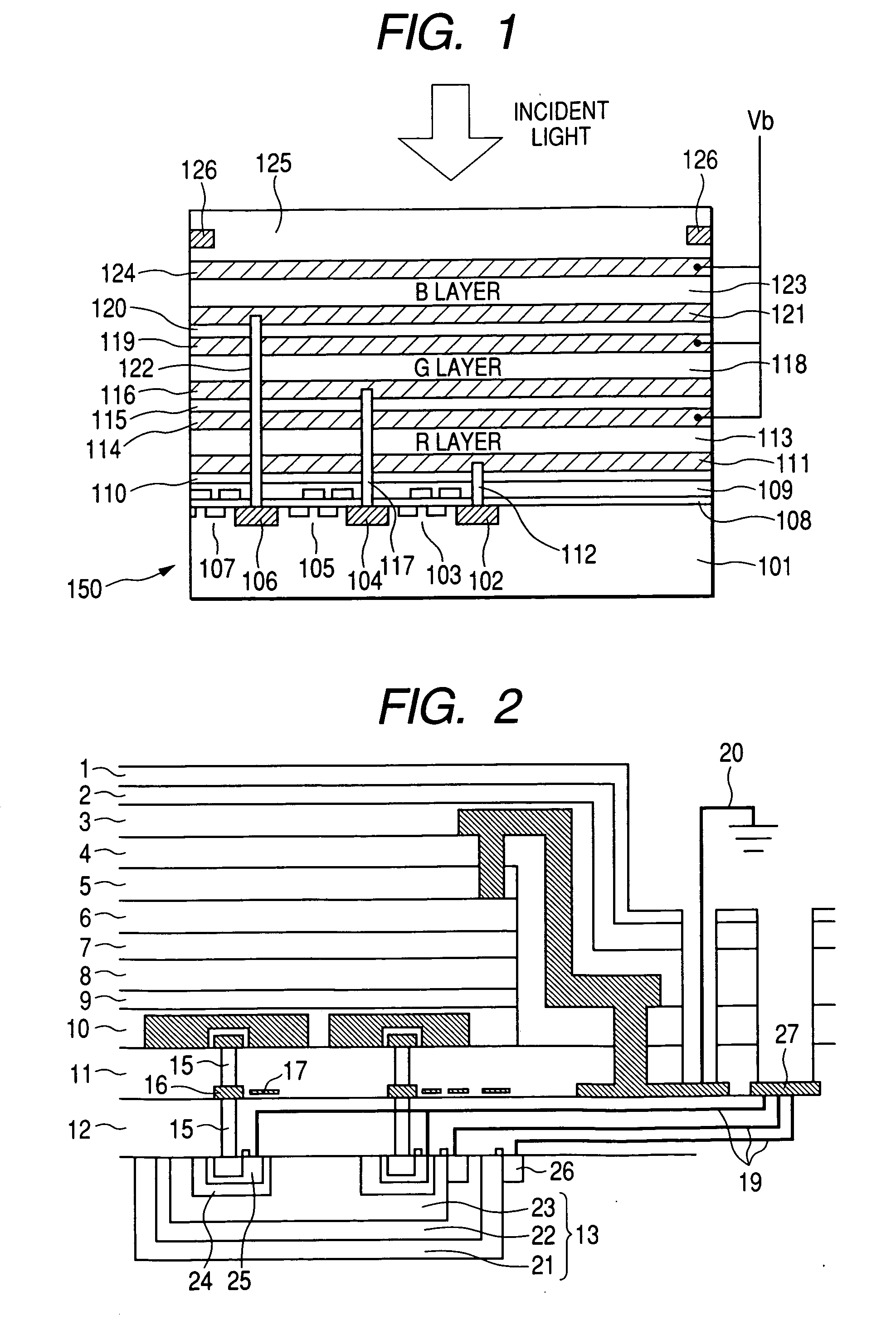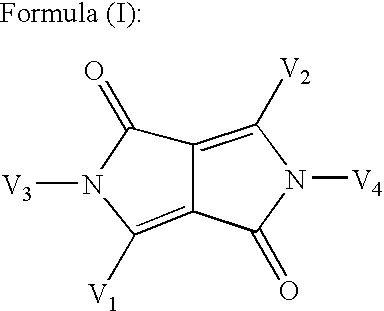Photoelectric conversion layer, photoelectric conversion device and imaging device, and method for applying electric field thereto
- Summary
- Abstract
- Description
- Claims
- Application Information
AI Technical Summary
Benefits of technology
Problems solved by technology
Method used
Image
Examples
example 1
[0220] A rinsed ITO substrate was placed in a vapor deposition device and subjected to vapor deposition with the following Compound (S-1) in a thickness of 30 nm. Compound (3) of the invention was then subjected to vapor deposition in a thickness of 30 nm thereon, thereby preparing an organic pn stack type photoelectric conversion layer. Next, a patterned mask (with a light receiving area of 2 mm×2 mm) was placed on the organic thin layer and subjected to vapor deposition with aluminum in a thickness of 100 nm within the vapor deposition device, and a drying agent was subsequently charged, thereby sealing the device. There was thus prepared a photoelectric conversion device (Device No. 101). A comparative photoelectric conversion device (Device No. 102) was prepared by replacing the Compound (3) of the invention by the following Compound (S-2).
[0221] Next, the respective devices were evaluated in the following manners.
[0222] With respect to Device No. 101, the case where a bias o...
example 2
[0225] A rinsed ITO substrate was placed in a vapor deposition device and subjected to vapor deposition with Compound (3) of the invention in a thickness of 50 nm. The following Compound (S-3) was then subjected to vapor deposition in a thickness of 50 nm thereon, thereby preparing an organic pn stack type photoelectric conversion layer. Next, a patterned mask (with a light receiving area of 2 mm×2 mm) was placed on the organic thin layer and subjected to vapor deposition with aluminum in a thickness of 100 nm within the vapor deposition device, and a drying agent was subsequently charged, thereby sealing the device. There was thus prepared a photoelectric conversion device (Device No. 103).
[0226] Next, this device was evaluated in the following manners.
[0227] With respect to this device, the case where a bias of 10 V was applied while making the ITO side plus and making the aluminum electrode side minus.
[0228] Using a solar module evaluation system manufactured by Optel, the wa...
example 3
[0230] A rinsed ITO substrate was placed in a vapor deposition device and subjected to vapor deposition with the following Compound (B-1) in a thickness of 20 nm. Compound (3) of the invention was then subjected to vapor deposition in a thickness of 50 nm thereon; Compound (S-3) was further subjected to vapor deposition in a thickness of 50 nm thereon; and the following Compound (B-2) was still further subjected to vapor deposition in a thickness of 50 nm thereon, thereby preparing an organic pn stack type photoelectric conversion layer. Next, a patterned mask (with a light receiving area of 2 mm×2 mm) was placed on the organic thin layer and subjected to vapor deposition with aluminum in a thickness of 100 nm within the vapor deposition device, and a drying agent was subsequently charged, thereby sealing the device. There was thus prepared a photoelectric conversion device (Device No. 104).
[0231] Furthermore, a rinsed ITO substrate was placed in a vapor deposition device and subje...
PUM
 Login to View More
Login to View More Abstract
Description
Claims
Application Information
 Login to View More
Login to View More - R&D
- Intellectual Property
- Life Sciences
- Materials
- Tech Scout
- Unparalleled Data Quality
- Higher Quality Content
- 60% Fewer Hallucinations
Browse by: Latest US Patents, China's latest patents, Technical Efficacy Thesaurus, Application Domain, Technology Topic, Popular Technical Reports.
© 2025 PatSnap. All rights reserved.Legal|Privacy policy|Modern Slavery Act Transparency Statement|Sitemap|About US| Contact US: help@patsnap.com



